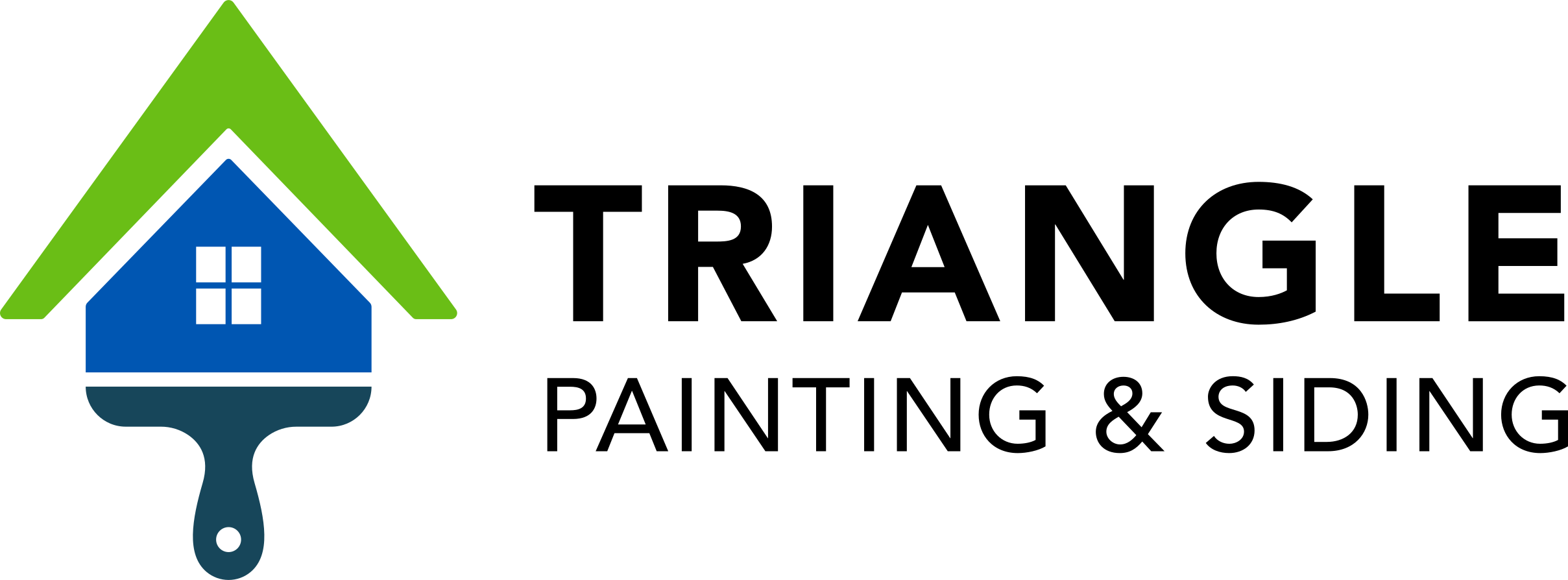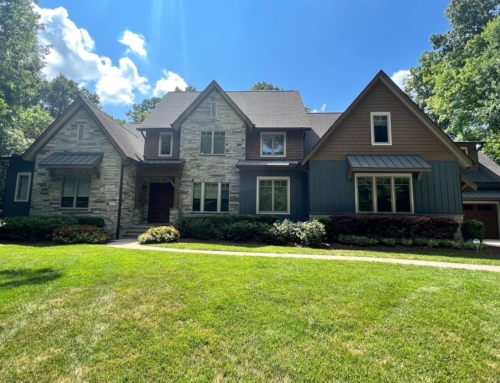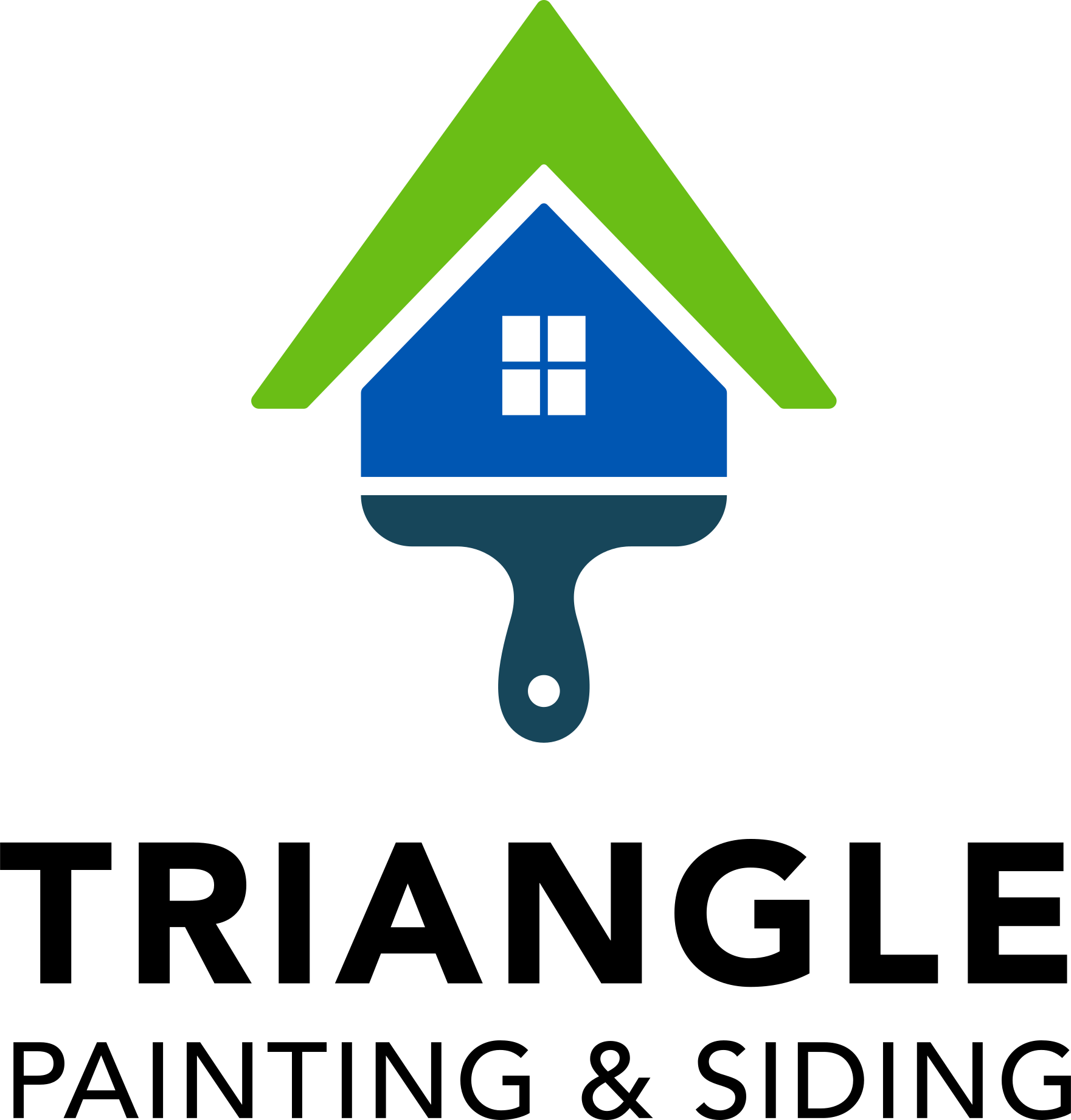Deciding to change the interior look of your home with a new paint job can be both exciting and overwhelming. With so many brands and colors to choose from, selecting the right interior paint for your home can be a challenge, but doing your due diligence at the beginning of the process can save you a lot of time and headache.
Choosing the best interior paint for your home can be a painless process if you know what to look for and consider during the selection process. A good paint job can transform the look and feel of a space. To start, it may be helpful to understand the distinguishing characteristics of interior paint.
How To Choose Between Interior or Exterior Paint
 If you’re considering using exterior paint for an interior project, it’s important to note that these types of paint are not interchangeable. Interior paint has fewer chemicals and is safer for indoor use, while exterior paint contains organic compounds that can be toxic when released into the atmosphere.
If you’re considering using exterior paint for an interior project, it’s important to note that these types of paint are not interchangeable. Interior paint has fewer chemicals and is safer for indoor use, while exterior paint contains organic compounds that can be toxic when released into the atmosphere.
To ensure a high-quality and safe interior paint job, it’s recommended to use trusted brands such as Sherman-Williams, Behr, Benjamin Moore, and Valspar. These brands offer excellent coverage and durability without compromising your health or the environment.
Types of Interior Paint
Semi-Gloss
Semi-gloss paint is a popular choice for areas like the kitchen and bathroom due to its shiny finish that reflects light. It is also known to fight mildew, making it a durable option for areas prone to staining or moisture. The reflective quality of semi-gloss paint can also help conceal stains and imperfections more effectively than other finishes.
High-Gloss
High-gloss paint is the most durable and washable paint available. It has an extreme shine that makes it highly reflective. This type of interior paint has a lower pigment concentration, which allows the paint’s binder material to reflect light effectively and produce a high-shine finish. High-gloss paint is easy to clean but can be difficult to apply, so it’s important to choose the right brushes and rollers. It’s commonly used for accent walls.
Eggshell/Satin Finish
Although not as durable as semi-gloss, eggshell finish is still a popular choice for common and children’s rooms as it is washable. It offers a bit of gloss without the high shine. It’s important to note that the higher the gloss component of the paint, the more imperfections in the wall or paint application can be detected. Eggshell finishes have less shine and can help hide flaws better than the glossier satin finish option.
Matte/Flat Finish
Matte and flat interior paints are the least glossy and are often used interchangeably. Matte paints have a slightly higher gloss level (between 5% to 10%) compared to flat paints, which have a gloss level of less than 5%. These types of paints are commonly used for painting bedrooms, living rooms, dining rooms, and ceilings.
One advantage of using matte and flat finishes is that they are forgiving when it comes to touch-ups. This means that if you need to touch up a small spot, it is less likely to stand out and ruin the overall look of the paint job.
How to Choose the Best Interior Paint for Your Home
Now that you are familiar with the different types of interior paint and where they work best in your home, it’s time to choose the perfect paint for your project. Here are a few helpful tips to consider when selecting your interior paint:
1. Consider Your Space
Understanding the difference between exterior and interior paint is useful, but when selecting the best paint for your job, it’s important to consider the specific area or room that will be painted. For high-traffic areas like a family room or spaces with lots of doors that come into contact with guests and family members, choose a durable paint that can withstand frequent cleaning.
When painting areas frequented by children, consider a paint with stain-resistant qualities that can be easily cleaned without damaging the paint. For bathrooms and kitchens, choose a high-quality interior paint that can handle consistent cleaning to prevent water marks, mold, and mildew.
2. Consider The Project Size
One of the worst things that can happen during a painting project is to run out of paint before completing the job. To avoid this nightmare scenario, it’s better to have a little extra paint left over than not enough. You can prevent this issue by measuring the square footage of the area or room that you plan to paint. This information will help you calculate the amount of paint you need to cover the area.
If you cannot measure the area yourself, check your lease agreement or house schematics for the necessary measurements. Once you have the measurements, multiply the length and width of the floor in the area you want to paint to get the square footage. Share this information with your paint specialist, who can estimate how much paint is needed for one to two coats.
To give you an idea, a gallon of paint typically covers 325 square feet of wall space. Having a little extra paint left over is always better than not having enough to finish the job. You can store the leftover paint for future touch-up jobs.
3. Test It First
Before painting your entire space, it is recommended that you perform a paint test to ensure that you are happy with the color and how it appears on your walls. There are varying opinions on whether to perform the test on your actual walls or on pieces of cardboard or paper, but the benefit of testing on your actual wall is that it allows you to see how your wall absorbs the paint. You can apply two coats and let it dry overnight to get the best results. To make the process quicker and easier, you can use stick-and-peel paint samples of your desired color options. Once the tester paint has been applied and dried, examine it in both daylight and evening, as the lighting can influence your final decision when it comes to paint selection.
4. Consider The Cost
It is generally better to apply the fewest number of coats possible when painting your walls, which is why it’s important to choose a high-quality paint that can provide sufficient coverage in one or two coats (most paint jobs typically require two coats). If you are planning to paint over a darker color with a lighter shade, it’s important to choose a paint that offers high coverage. Products like Sherman-Williams’ Super-Paint are specifically designed for this type of job. You can also consider using a paint primer in the same color as your wall paint to further enhance the coverage.
5. Do Your Research
To ensure that you get the best results for your interior paint job, it’s important to do some research on the front end. This will help you minimize the need for any redoing later on. With the prep, execution, and cleanup time involved in such a project, as well as the cost of the paint itself, which can range from $20 to $100 per gallon for premium brands, you want to make sure that you do everything you can to get it right the first time.
Research the top brands for the particular paint you’re interested in and select two or three options. Another approach to selecting paint is to determine the color and type of finish you want to explore. Visit the websites of the brands you’re interested in to determine whether they offer that particular paint. Also, ask neighbors, family, and friends about their paint selections and how the paint performed in their homes to get a better idea of how the paint holds up.
If possible, visit our showroom to see the paint colors up close and in person. Selecting an interior paint is an investment in your space, and doing your research will help ensure that you get a good return on your investment of time and money.
Triangle Painting & Siding Is Here To Help
If you would like some professional help with your painting project, Triangle Painting & Siding is here to help. Simply contact us today to get your free quote. We proudly service the entire Research Triangle area, including Raleigh, Cary, Garner, Apex, Wake Forest, Clayton, Holly Springs, Fuquay-Varina, Knightdale, Morrisville, Durham and Chapel Hill, NC.








